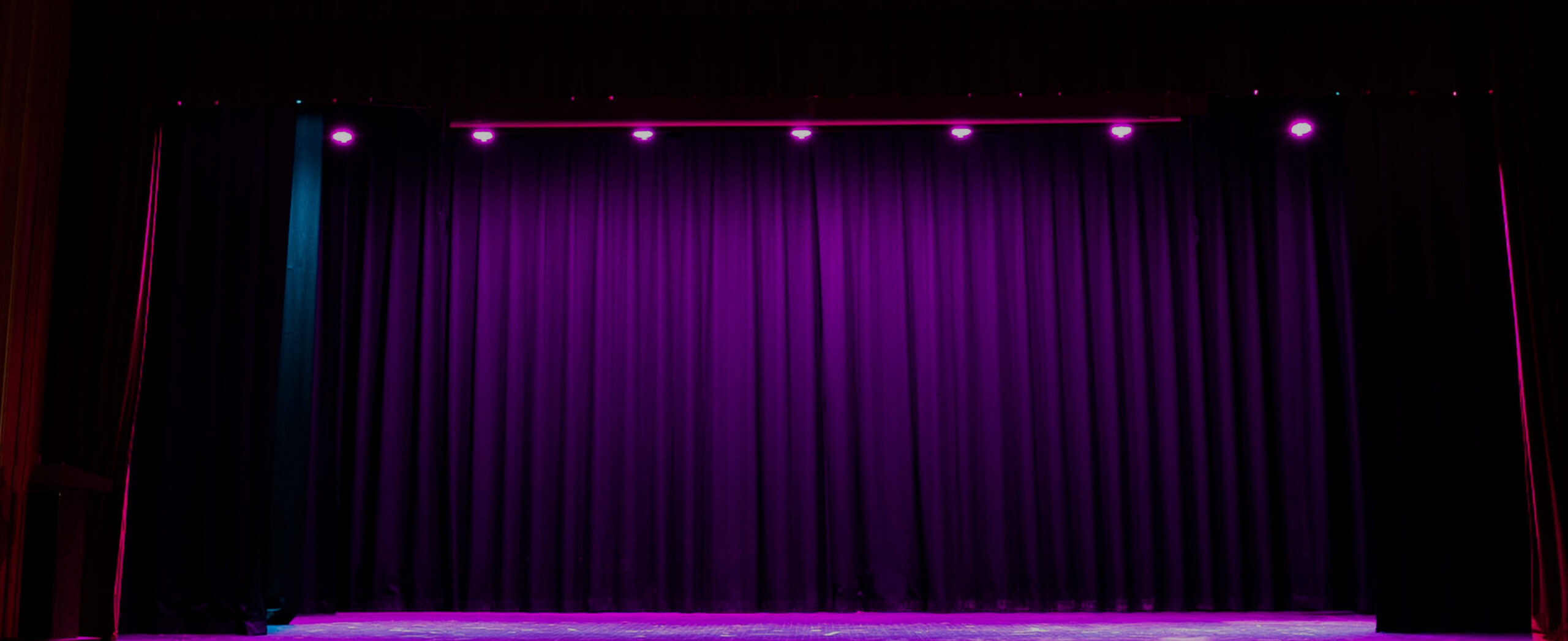

A standard operating procedure (SOP) for theatrical rigging sets the stage for safe practices. It’s a document that provides clear, step-by-step instructions on how to set up and operate rigging equipment safely and according to manufacturer specifications. It also simplifies the process of training new crew members by serving as a useful reference.
An SOP can be crafted to help the rigging team comply with safety standards set by the Entertainment Services and Technology Association (ESTA), which is accredited by the American National Standards Institute (ANSI) and the Occupational Safety and Health Administration (OSHA). For example, a rigging SOP might include procedures to perform equipment inspections to promote compliance with OSHA’s rigging equipment inspection standards and ANSI E1.47-2020.
Whether it’s time to evaluate your current SOP or write something new, we’ll help you get started. Follow the steps in this post to evaluate, modify or create your rigging SOP.
Unlike a no-fly system, a rigging SOP is not static — it’s meant to adapt to changes as they occur. We recommend evaluating your SOP at least annually or any time a change could impact safe operation. Plan to review your SOP when you do any of the following:
Evaluating your SOP and modifying it as needed will help prevent accidents, ensure compliance with industry standards and prepare your crew to operate rigging systems safely and smoothly.
Take these actions to evaluate your SOP:
First, review your existing SOP and consider if it’s still relevant. Ask yourself:
Look for any gaps or areas that need improvement and take note.
Riggers rely on SOPs to do their work, so they can be valuable resources for feedback. Ask experienced crew members, riggers and managers if they’ve noticed any gaps in your SOP and what they would do to improve it. Think about asking newer crew members for feedback too — they might provide insight into whether the SOP is trainee-friendly.
OSHA, ESTA and ANSI standards change periodically to keep pace with technological advancements and emerging safety needs. For example, ANSI E1.47-2020 — the Recommended Guidelines for Entertainment Rigging System Inspections — is the revised version of ANSI E1.47-2017. Many documents related to ESTA’s ANSI-accredited entertainment technology standards have been superseded over the past two decades, as you’ll see at ESTA’s Technical Standards Program site. Therefore, you may find it useful to compare your SOP to the latest approved standards and double-check that it’s up to date.
It could also be helpful to review OSHA standard 1926, particularly Subpart H and Subpart M, which cover rigging equipment and fall protection guidelines, and ESTA’s International Code of Practice for Entertainment Rigging (ICOPER).
A risk assessment aims to identify all hazards and corresponding risks related to operating rigging equipment. Conducting a risk assessment will help you determine if your SOP adequately acknowledges and addresses every potential hazard.
For instance, if your venue uses a counterweight rope system, it carries the risk of rope wear and tear, which could become a safety hazard. Your SOP can include guidelines on inspecting the rope for fraying or damage — generally, before each use.
To conduct a risk assessment, consider every task your crew performs and everyone who could be impacted by it — including riggers, cast members and the audience. List the following:
Plan to modify your SOP to take newly identified dangers, risks and preventive actions into account.
Rigging experts can inspect your system to make sure it’s up to ESTA, ANSI and OSHA standards. They’ll identify potential hazards, such as damaged shackles, eye bolts, thimbles or cables, and provide repair or replacement recommendations. You can leverage their expertise to address hazards and update your SOP to reflect their guidance — with confidence and peace of mind.
Did you spot safety or compliance concerns during your SOP evaluation? If so, plan to modify your SOP promptly and get your crew on track to safe rigging practices.
Use the following steps as guidance:
Write a rough draft of the changes you want to make to the SOP, incorporating what you discovered during your evaluation. If it’s helpful, create and use a flowchart to gather your thoughts and break down the tasks needed to modify your SOP before you dive into writing.
The rough draft does not need to be perfect — you’ll likely revise it before finalizing it. It can, however, be a great tool for facilitating feedback and ensuring the proposed changes flow logically and are easy to understand.
Plan to meet with your crew again to share your rough draft and get their input. The goal is to ensure your draft addresses issues that surfaced during your evaluation and is written clearly. Consider asking third-party rigging experts to review your draft as well so they can provide feedback.
After you’ve applied feedback to your SOP and created a final draft, it’s time to communicate the changes to crew members, riggers, managers and anyone else involved. You might hold a meeting to share the updated SOP or conduct training sessions if needed, such as if there were significant changes or safety concerns. Consider if each crew member has access to the revised SOP, is properly trained on new procedures and understands exactly what’s expected of them.
No SOP? Let’s create one. The following steps give you a head start:
Think about the objectives, goals and scope of your rigging SOP. Ask yourself questions such as:
There’s no need to go into too much detail yet. The first stage of SOP creation is all about clarifying its purpose and audience. Clarity can help you focus on the types of procedures to cover.
You can also use this stage to write a brief introduction explaining the purpose of the SOP. Consider adding the introduction to the document’s first page so readers can quickly determine if it’s relevant to their role.
Now, we’ll dive into a bit more detail. Draft a list of all the rigging equipment currently in operation, potential hazards and associated risks, and crew members who will use the SOP. Gather the equipment manufacturers’ operator manuals to ensure you cover all the safety guidelines and operational instructions.
Here’s an example of what to include in an SOP that involves operating counterweight or motorized hoist systems:
As a guideline, plan to list every step currently used to set up, operate, inspect and maintain your rigging system. Then, aim to make these steps easy and efficient to follow.
Even though manufacturer specifications typically align with industry standards, it’s still valuable to review safety regulations to create an SOP that thoroughly covers best practices. Use OSHA’s 1926 regulations, the ANSI-approved ESTA standards and ESTA’s ICOPER to determine points to include in your SOP. For example, according to OSHA standard 1926.251 (a)(2)(ii), rigging equipment should not be loaded in excess of the manufacturer’s safe working load. To help your riggers comply with this standard, make sure the SOP includes load limits.
An SOP template can help you include all the necessary information efficiently. Other departments within your organization, such as the maintenance department, may already have an SOP template you can use. You could also reach out to colleagues to see if they have an example or template to share, or do a quick search online for SOP templates.
Also, consider the formats you’ll use to illustrate equipment operation procedures. For instance, you can include graphics in your SOP to help users visualize intricate operations. Procedures involving fewer details, such as equipment inspections, might be conveyed in bulleted lists or checklists.
The key to creating a thorough and effective SOP is to consult experts for assistance. Rigging professionals who are well-versed in OSHA and ESTA best practices can assist you in covering all your bases and creating an SOP that complies with safety standards.
Assign crew members to review and test the SOP so they can provide feedback before creating the final draft. We recommend selecting experienced riggers for testing because their hands-on knowledge will help them identify gaps.
Encourage riggers to evaluate the SOP’s thoroughness, feasibility and readability. Specifically, ask them to consider if:
Gather feedback you’ve received from crew members and consultants and incorporate it into your SOP. You might have riggers test the SOP again or give it a review before finalizing and implementing it.
Since SOPs are living documents, it can be helpful to establish a schedule for ongoing evaluation and improvement. Evaluation frequency depends on your organization’s needs, but in general, we suggest planning to review your SOP at least once a year. You might schedule an SOP review around the same time you perform a thorough annual inspection, for example.
As mentioned earlier, we suggest evaluating your SOP any time a change occurs, whether you’re adding crew members or installing new equipment. Periodically assessing your SOP will keep it up to date and promote the safety of all those involved.
Keep these general writing tips handy when crafting or modifying an SOP:
An SOP is the map your crew will use to safely navigate and operate rigging equipment. Every task and potential hazard must be accounted for in the SOP to encourage optimal safety. For these reasons, creating an SOP can feel like a lot to take on without assistance. We understand — and we’re here for you at every step.
At Illuminated Integration, our rigging design and installation experts can thoroughly inspect your rigging system to identify potential safety hazards or compliance concerns, recommend tailored solutions, and offer support as you create your SOP. We’ll make sure your rigging system and SOP adhere to the latest OSHA, ANSI and ESTA standards and integrate seamlessly with your audio-visual-lighting equipment. We’re also happy to review your existing or newly written SOP and provide feedback.
No matter the type of rigging system you use, we’re excited to work with you and ensure your crew is prepared for a safe and engaging performance. Contact us today to learn more about our rigging inspection, installation or consultation services. We can’t wait to collaborate with you!